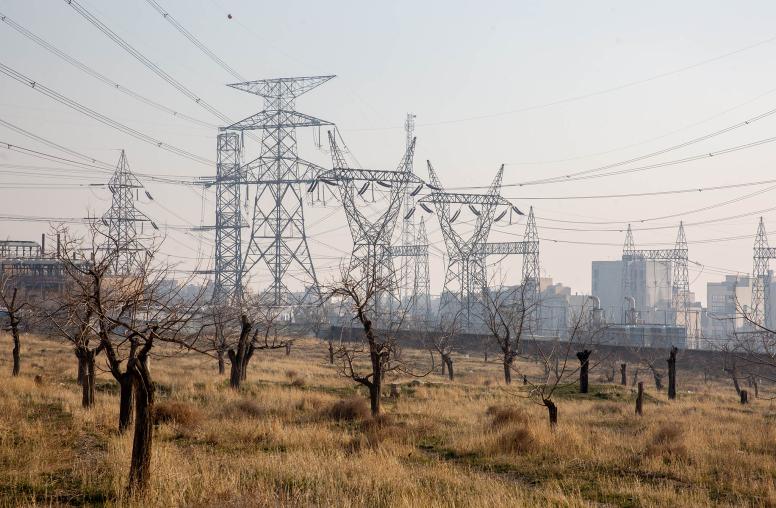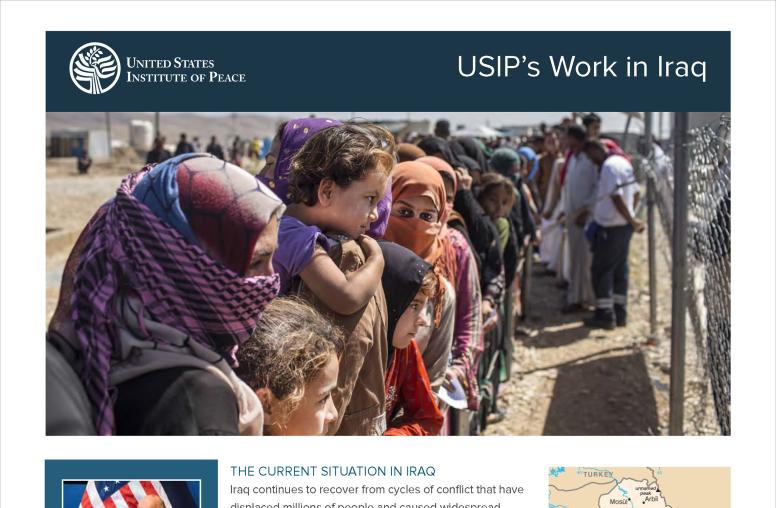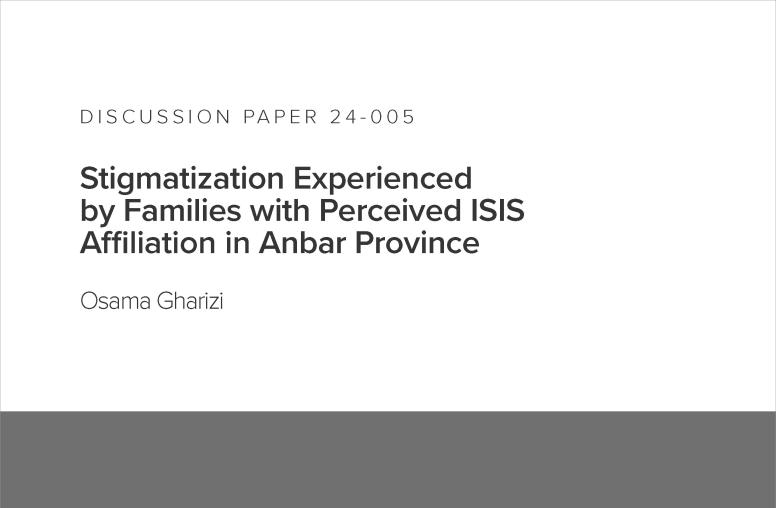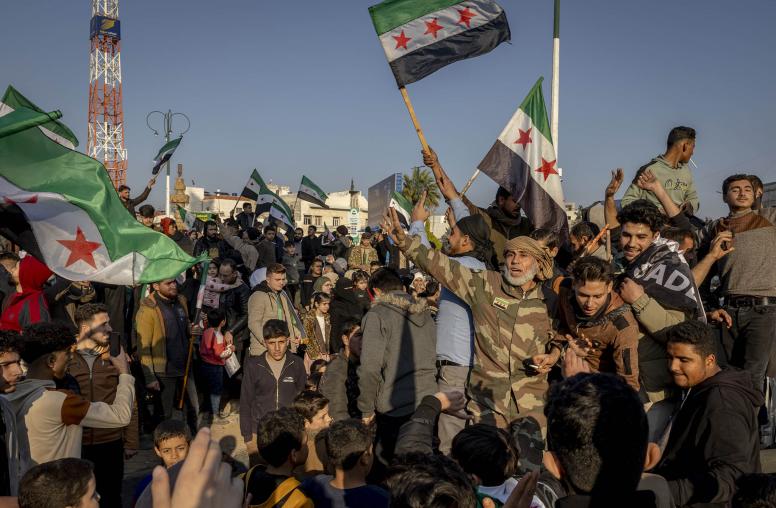Struggle for Sinjar: Iraqis’ Views on Security in the Disputed District
Can the agreement Baghdad and Erbil inked last year respond to the needs and desires of Sinjar’s communities?
Editor’s Note: This is Part 1 of a two-part series on the October 2020 Sinjar agreement and its communities’ perceptions of security and governance in the district. Part 2 focuses on administration issues and concludes with a discussion on the opportunities and limitations of the agreement.
Home to Iraq’s beleaguered Yazidi (Ezidi) community, Sinjar has long been caught amid tension between Iraq’s federal government and the Kurdistan Regional Government (KRG), leading to severe underdevelopment in the district. Compounding Sinjar’s historical struggles, the district also witnessed the Islamic State group’s (ISIS) egregious crimes against the Yazidis. In October 2020, the Iraqi government and KRG announced an agreement on Sinjar that attempts to resolve two pressing factors undermining its stability: the multiplicity of security actors and the existence of two rival administrations for the district, one that is unofficial and backed by the PMF and the other that is official and pro-KRG. As implementation of the deal lags, it’s important to consider how Sinjar’s residents perceive the agreement’s ability to address the district’s security and governance challenges.

With a final determination of Sinjar’s legal jurisdiction up in the air, the Government of Iraq (GOI) and KRG have fiercely competed to gain the loyalty of Sinjar’s communities. This competition has led to little formal investment, insecurity and a heightening of tensions. Sinjar is considered one of the least developed and poorest areas in Nineveh province, and is afflicted by intra- and inter-community tensions and a deteriorating security situation.
Article 140 of Iraq’s constitution lays out mechanisms to resolve the status of disputed districts, but to-date has not been implemented. With the prospects for implementation slim, the GOI and KRG inked the Sinjar agreement to help stabilize the district. The agreement calls for security in the district to be the responsibility of formal security actors linked to the Iraqi government, namely the local police and intelligence services, and for other security actors to withdraw from the area. It also stipulates that the local police expand to include 2,500 additional members from the district.
On administration, the agreement mandates the appointment of a new mayor for the district, one who is deemed to be politically independent, and for all other key administrative positions to be filled with consideration for the district’s demographic composition. Lastly, the agreement touches upon the lack of development in the district by forming a joint GOI-KRG committee in charge of rehabilitating the district.
Recent findings from USIP’s Conflict and Stabilization Monitoring Framework (CSMF) highlight that the Sinjar agreement, if implemented, may indeed help address some community concerns around security and governance. Yet the data also shows the limitations of the agreement in meeting the needs of Sinjar’s communities, and that more will need to be done to stabilize the district.
Sinjar’s Struggles
That such an agreement is even needed reflects Sinjar’s troubled history. Before Saddam Hussein was toppled, the district — home to a majority Yazidi community and a sizeable Sunni Arab population — was targeted by the Baathist regime’s “Arabization” policies that sought to change the demographic makeup of the district in favor of the Sunni Arab community. Specifically, these policies displaced Yazidis into government-owned townships, put restrictions on their ability to own property, and reallocated their appropriated property to transplanted Sunni Arabs. In doing so, many Yazidis lost a key source of their economic livelihoods — agriculture lands — becoming heavily reliant on the regime for basic needs. At the same time, the Yazidi majority area of Al-Qahtaniya was detached from Sinjar and replaced with Qayrawan, a subdistrict inhabited mainly by Sunni Arabs. The ultimate objective of these policies was to push back against Kurdish self-determination efforts following the 1970 Autonomous Agreement in which the Baathist government agreed to the autonomy of Kurdish majority areas in northern Iraq. But, the agreement was never honored.
Though officially under the administration of the federal government pending determination of its final status under Article 140, Sinjar was under the de facto control of the Kurdistan Democratic Party (KDP), and by extension the KRG, for much of the post-2003 period. Then in 2014, ISIS swept through the district, committing gross atrocities against the Yazidis. Coming to the Yazidis aid were new political and military actors, namely the People’s Protection Units (YPG) and the Sinjar Protection Units (YBS), both considered affiliates of the Kurdistan Worker’s Party (PKK), a historical political rival to the KDP. Further diminishing the KRG’s influence over the district was the fallout from its September 2017 independence referendum, which included Sinjar and other disputed territories. The referendum largely backfired, resulting in federal security forces and the Popular Mobilization Forces (PMF) taking over key areas once controlled by KRG forces.
In control of most of the district, the PMF leadership established in late-2017 a new administration that directly challenged the official administration whose displaced members are close to the KRG. The rival administrations complicated an already dire governance situation, as provincial and national authorities did not officially recognize the prerogatives of the newly established, unofficial administration. This meant that, among other things, residents of Sinjar who needed anything official from the government, like documentation for property ownership, would have to seek out the displaced council and mayor for official approvals. Though not fully recognized by some government authorities, the unofficial administration still has considerable sway given its ties to the dominate military actor in the area.
Sinjar also suffers from the presence of a multitude of security actors and the lack of any centralized command-and-control hierarchy. Local police, PMF, PKK, or YBS — to name but a few — each control different parts of the district. Adding to this challenge is the fact that the PKK’s presence in Sinjar has regionalized conflict in the district: Turkish airstrikes and threats against their positions have been a frequent occurrence in recent years.
Give this reality, the GOI-KRG agreement’s attempt to tackle the challenges of dual administration and security fragmentation has been generally welcomed. The pact, however, has several shortcomings. For example, it has been criticized for being a politically negotiated solution imposed on Sinjar’s communities, rather than one that engaged all communities so that any agreement would reflect their genuine needs and desires. On this, Yazidi leaders have called for the agreement to be amended for it to more accurately reflect and respond to community grievances around security, governance and transitional justice. Political parties representing some of the Sunni Arab community in the district also voiced their concerns over the lack of community inclusion.
Sinjaris’ Views on Security
The CSMF provides insight into how the district’s communities view security and governance issues tied to the agreement’s provisions. The pact’s attempt to unify the security apparatus and make the local police more inclusive of the district’s population speaks directly to specific community concerns. For example, the majority of respondents from the district (78%) express some fear that clashes between security groups in their subdistrict will occur, a sentiment that is consistent throughout Sinjar Center and the subdistricts of Sinuni and Qayrawan and irrespective of ethno-religious affiliation. This fear is a direct reflection of the many security actors present and the tensions between and among them.
Moreover, the agreement’s effort to include more residents into the local police force could help allay concerns by some communities over underrepresentation in the security sector. While the general district trend is positive — more respondents believe their ethno-religious group is represented in the security configuration of their subdistrict than not (54% to 41%) — the Sunni Arab community in Sinuni feels particularly excluded, with 61 percent saying they are not well represented and 35 percent stating they are not represented at all. Sunni Arab respondents in Sinuni are also considerably more likely to feel both intimidated by the security actors in their subdistrict and that security actors are committing political acts of violence than other residents in the district.
Yet despite the general positive view that the security arrangement is more or less representative of the district’s communities, there persists a perception that the security configuration needs to be amended: 47 percent state that to feel protected they would like to see a different security configuration in their subdistrict. This feeling is most acute among Yazidis in Sinjar Center and Sunni Arabs in Sinuni. Of note, residents of Qayrawan subdistrict unanimously state that the current security configuration in the subdistrict is their preferred option.
Indeed, Qayrawan residents tend to have differing views on a host of security matters than those residing in Sinjar Center and Sinuni. For instance, they report the highest degree of comfort moving around in their subdistrict (91%), feel safer than they did six months ago (89%), describe a higher percentage of inclusion in the security sector compared to other groups, especially the local police (18%), and state stronger feelings of representation in the security configuration of their area (34% feeling “very well represented” and 55% “somewhat represented”). And unlike residents in other areas, the vast majority of Qayrawan denizens do not feel intimidated by security actors in their areas (77% report no intimidation). These views indicate that the security dynamics in Qayrawan differ considerably from those in Sinjar Center and Sinuni, which may be due to the fact that the subdistrict is less politically and ethno-religiously fragmented than other areas in the district.
Another factor that may also help explain the variations on security between Qayrawan and other areas is the extent to which local police are present and active. District residents are by far most comfortable with local police as the main security actor they turn to if a crime occurs (48% overall; 64% of Yazidis and 53% of Shia Kurds/Arabs in Sinjar Center; 33% of Sunni Arabs and 48% of Yazidis in Sinuni; 98% of Qayrawan residents). Yet the majority of Yazidis in Sinjar Center (55%), and Sunni Arabs in Sinuni (82%), along with over a third of Yazidis in Sinuni (36%), state that local police are sidelined by other security actors in their area. This stands in stark contrast to residents of Qayrawan, where 98 percent of respondents believe the local police to be the primary actor in law enforcement.
These findings demonstrate that if the GOI-KRG agreement is indeed successful in streamlining the security apparatus of the district and expanding and empowering the local police’s role in law enforcement, then it could help improve the overall sense of safety in other areas throughout the district.
Yet prospects for this outcome are slim at the moment as YBS supporters continue to reject the agreement’s call for the PKK and YBS to be disbanded and removed from the district. Many Yazidi community leaders have called for Yazidi members of the YBS to be integrated into the local police as part of the agreement, which was met with initial pushback from the KDP and the Turkish government. The Iraqi government had given the group until April 1 to leave the district, a deadline that was put in place in part due to the Turkish threats of an attack. However, an understanding seems to have been reached to keep the status quo. While this might limit short-term tensions, the standoff does little to advance a sustained, inclusive security plan that meets the desires and expectations of the district’s communities.



